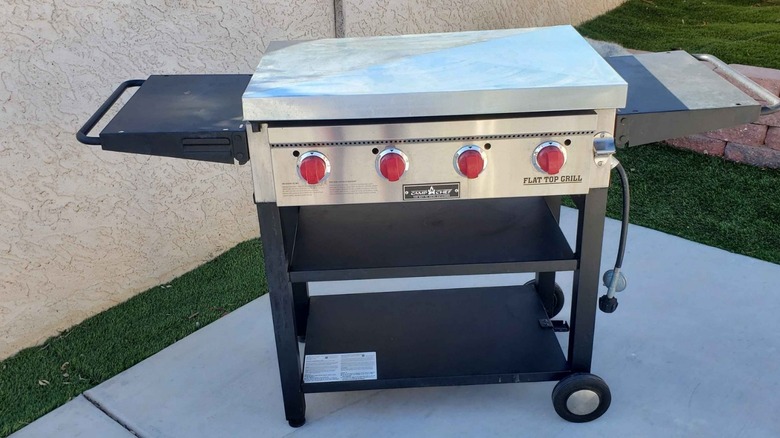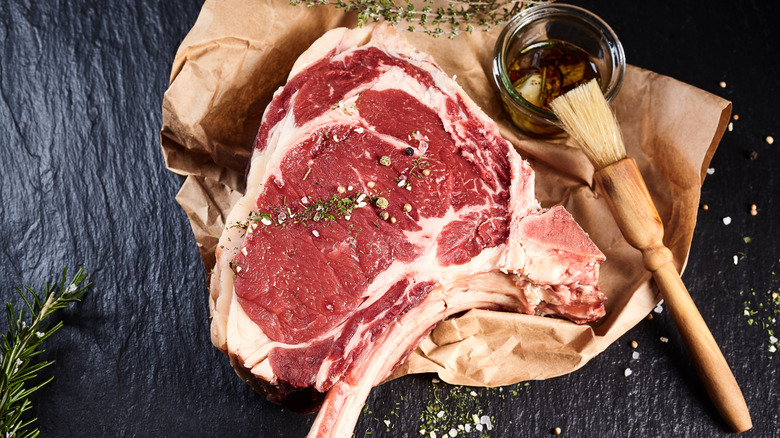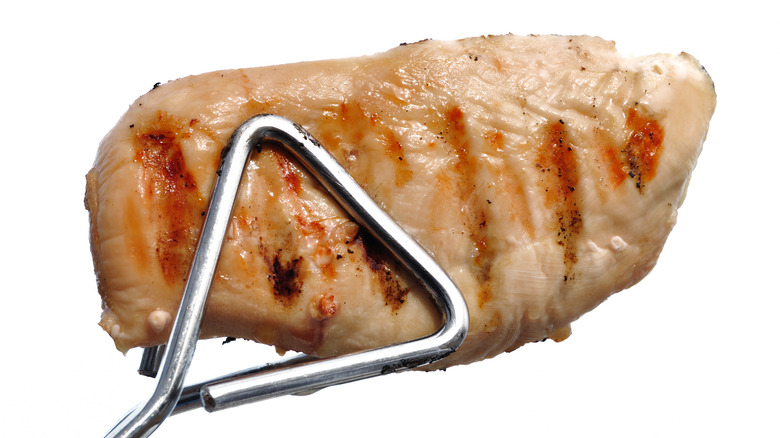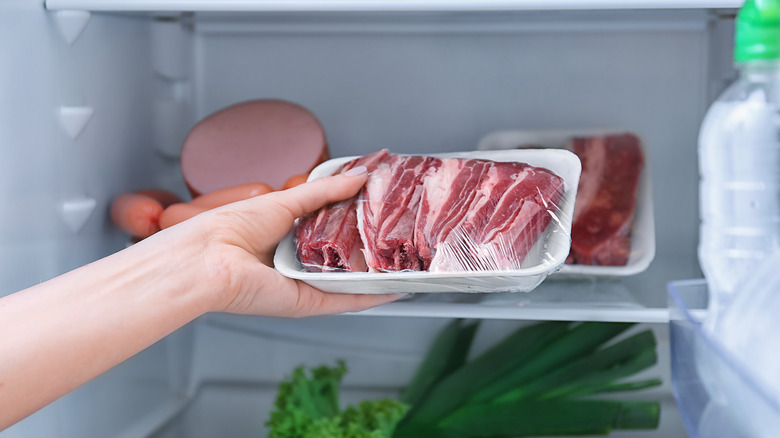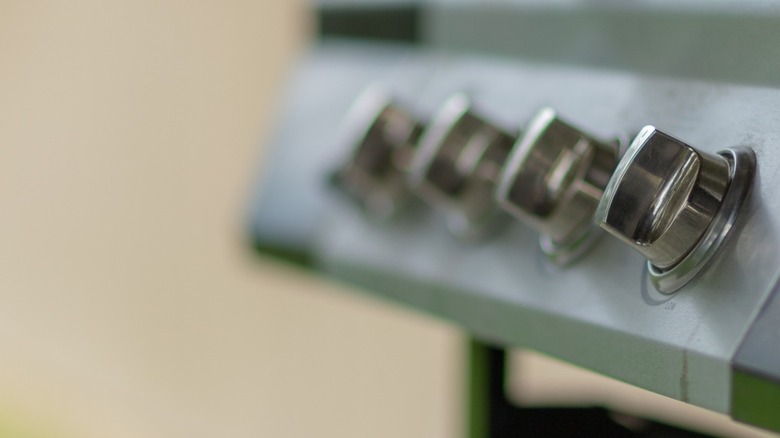The Most Common Mistakes You're Making While Using A Flat-Top Grill
While some backyard barbecuers prefer a good old fashioned charcoal kettle grill just like grandpa had, others prefer all the modern conveniences, and if there's one thing you can say about a flat-top grill, it's not only convenient, but is also incredibly versatile. Sure, there may be a few purists who sniff and say "that's not a real grill" due to its lack of grates, but a flat-top will allow you to cook just about anything you could cook on a stove top out in the fresh air and sunshine instead. On a hot summer day, or even a beautiful breezy spring one, the fact that you're cooking outdoors is all that really matters.
BBQ Guys points out a few more advantages of using a flat-top instead of a more traditional grill. They say flat-tops produce more even heat, aren't too smoky, and require less added oil, so the food you cook is healthier than if you used a grated grill. You can also cook multiple dishes at once, or even have your guests get involved in cooking their own dinners to order. While using a flat-top is fairly easy, nothing is entirely foolproof, so Mashed spoke with barbecue expert Remy Forgues, a Culinary Arts chef-instructor at the New York campus of the Institute of Culinary Education, for some advice on what not to do when using this type of grill.
Don't skip the fat altogether
While flat-top grills may not need to be oiled to the same extent as do grill grates, you will still need to use a little bit of lubricant. Forgues says that the flat top needs to be preheated and then lightly oiled before each use, and also says that the food cooked on the grill should also be given a light coating of oil to make sure it doesn't stick.
"In the Culinary Arts classes that I teach at ICE," Forgues tells us, "everything that goes onto the grill is first quickly marinated in a mixture of oil and acid." The excess marinade is then removed before the food goes on the grill because, as Forgues explains, "As the food cooks, extra fat will be released, especially from meat, so it is important to scrape it off the grill so the fat does not overheat or create smoke. "
Don't keep moving the food
While grilling may seem to be a more hands-on method of food preparation than, say, roasting something in an oven, where you pretty much set it and forget it, there's still such a thing as getting too handsy with your food. As Forgues advises us, "Once the food is on the grill, leave it undisturbed." The reason for this, he says, is that "If you frequently check it, you will never be able to create a nice brown crust." What's more, you'll also increase the chances of having the skin tear.
A better way of checking your meat for doneness, rather than poking it and prodding it, is to use a meat thermometer. Forgues also suggests using a timer, since he says that once you've cooked a certain food at a certain grill setting, you can expect that a similar food at a similar thickness will be done in the same amount of time.
Never grill cold food
As an experienced or semi-experienced griller, or even someone who's read a few grilling tips, you should know by now that a grill must be preheated before cooking in much the same way as an oven does. What you may not know, however, is that the food you plan to grill must also be, well, not exactly pre-heated, but at least allowed to take the chill off. As Forgues advises, "Avoid grilling food straight from the fridge because it will steam rather than sear, making it impossible to create a char."
What you should be doing instead is to take the food out of the refrigerator prior to grilling it. Forgues suggests that 10 to 20 minutes of out-of-fridge time ought to do it, depending on the size and thickness of the food. Don't let the food sit out for too long, though, since this poses a danger of contamination. According to the USDA, no type of perishable food should ever be left at room temperature for longer than two hours, or one hour if the temperature is 90 degrees or above.
Don't forget to take advantage of the different temperature settings
One of the best things about using a flat-top grill is that it has different temperature zones. Forgies says you should definitely make use of these, and not just leave the whole grill set at the same temperature. He tells us that usually the hottest grill burner is the one on the left, while the lower, cooler zones are to the right. The hottest side should be used for searing, and then the food can then be moved to a lower heat to finish up.
Not only will using the flat top grill's hotter and cooler zones give you more versatility while cooking, but Forgues also says that "working this way also allows you to grill at a faster pace." What's more, it may even prevent a potential problem. "If all the burners are set to the max," Forgues warns, "there is a chance the food may burn before it is fully cooked."
